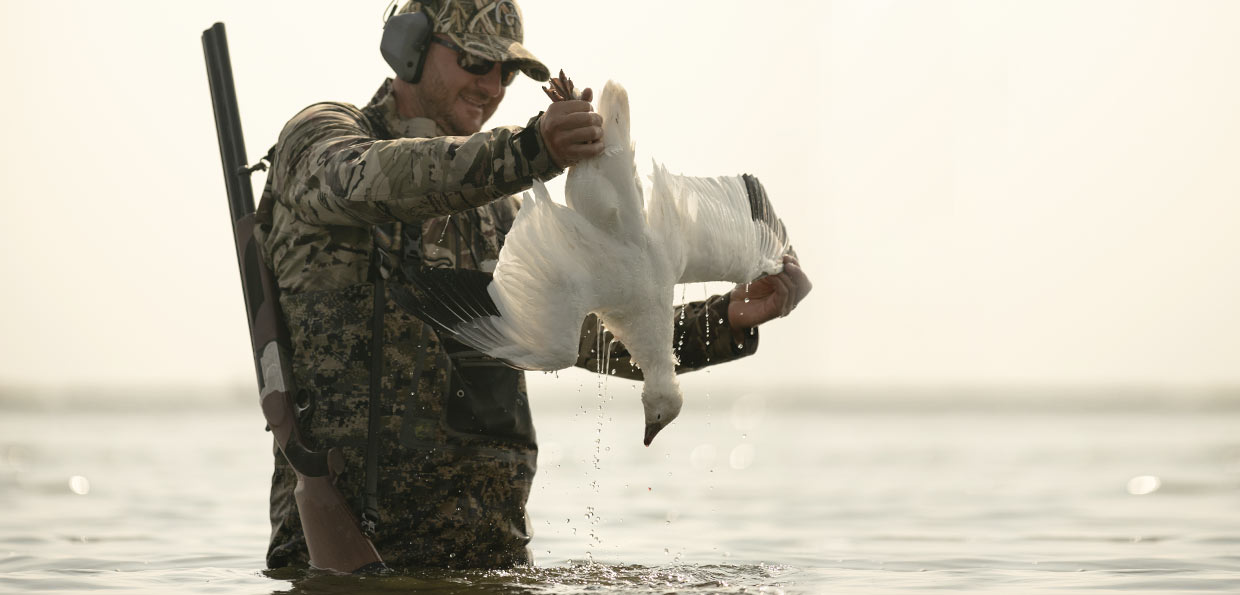
Snow Geese Migration
A Spectacle & An Environmental Concern
Nothing is more spectacular for nature lovers, photographers and birdwatchers than viewing thousands of snow geese migrate from Arctic breeding grounds. As everyone enjoys the scene, wildlife biologists and farmers watch the same arrival with concern.
Snow geese have an insatiable appetite that poses a threat to vegetation. Unlike Canadian geese, snow geese rip out the plants by the root, which can harm wetlands and farm vegetation. From early winter through March, snow geese live on fall’s leftover corn and wheat while they gobble new stems of winter plantings, leaving a muddy bare patch on the ground.
There were several emergency meetings during the 1990s concerning the snow geese population. According to U.S. Fish and Wildlife Service, the snow geese population in North America has risen from less than 1 million in 1970 to at least 13 million in 2019. With the rising population, there are concerns for the environment, vegetation, and resources.
In 1999, a new Spring Light Goose Conservation Order gave new hunting opportunities for waterfowl hunters. For more than 20 years, waterfowl hunters have been hunting under the Spring Conservation Order.
What is the Spring Light Goose Conservation Order, 1999?
This order was initiated by partnering with federal, provincial, state, and non-governmental organizations to monitor, control, and reduce the snow geese population by half over ten years. As the snow geese population in the mid-continent grew to more than 8 million by the late 1990s, there were too many adult birds to curtail overall goose numbers. Although multiple methods were in place to control the snow geese populations, there has been little progress.
There were changes in agricultural practices on wintering grounds, leading to well-fed snow geese in the Arctic. It further led to their large numbers and areas of nesting sites. Their rapidly growing population was leading to irreversible ecological damage as they could destroy their habitat, creating conditions where geese and other waterfowl struggle to survive.
Difference between Conservation Order & Hunting Seasons
- Unlike hunting seasons, the Conservation Order will end when management’s goals are met.
- You can use electric calls, and most states or provinces increased daily limits and have no possession limit.
Snow Goose Hunting Techniques
The good thing about snow goose hunting is you still have an opportunity to hunt in the late winter and spring when the waterfowl season is over. Like every hunt, the spring goose hunt needs good preparation too.

Scouting
Since the geese are trying to move to the north, you will usually find huge flocks halting wherever the snow starts. Take some time and look at the fields or pastures near the area where geese might halt to feed on the exposed ground. When you find the right location, ask for permission from the farmers or owners of the field. Be respectful and responsible for any opportunity on their land.
Decoys
For snow goose hunting, one of our secret weapons is decoys. No matter how big your spread is, incorporating snow goose flags within your blind and scattering white garbage bags around the area can give you an edge. It’s best to keep the motion of the decoys close to you, as this increases your chances of getting some shooting in. Additionally, place the landing zone on the upwind side, as snow geese tend to land in that area when feeding.
Calls
When dealing with large flocks of snow geese that are very noisy, your loudest goose calls may not be enough to get their attention. So, during conservation order hunts, use electronic calls and amplifiers without issues. Don’t hesitate to use them to get the geese’s attention if the decoys are not doing the trick.
Retrieval
A good retrieving dog can save you a lot of legwork when you are shooting hundreds or thousands of geese at a time. Sometimes, there may be no bag limit, so training your dog with retrieval skills can make your hunting experience enjoyable and memorable.